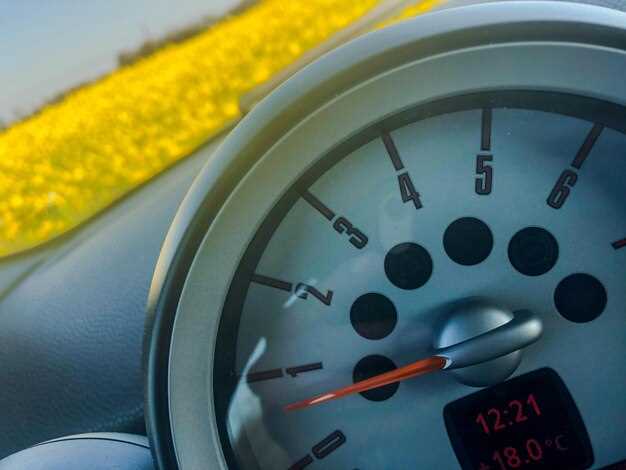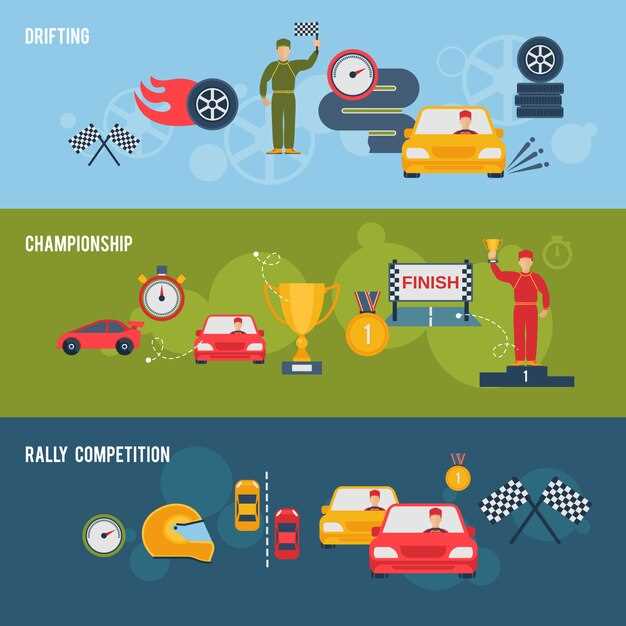
In the world of motorsports, endurance racing stands out as a test of not only a car’s performance but also the strategic prowess of its team. Successful teams must develop a meticulous approach to various elements, including fuel management and driver rotation, to ensure optimal performance throughout the long hours of competition. Understanding how to balance these aspects can make the difference between victory and defeat.
The fuel strategy in endurance racing is critical, as teams must determine the right amount of fuel to carry while optimizing pit stops for quick refueling. An effective plan involves calculating fuel consumption rates and taking into account factors such as track conditions and driver performance. This strategy not only influences lap times but also plays a crucial role in minimizing the amount of time spent in the pit.
Equally important is establishing a consistent rhythm during the race, which encompasses both driving style and team communication. Drivers must maintain focus and rhythm throughout their stints, allowing them to push the car’s limits without compromising safety or performance. Coordinating this alongside pit strategies ensures that the team operates like a well-oiled machine, maximizing their chances of success in the high-stakes environment of endurance racing.
Optimal Fuel Consumption Techniques for Long Races
In endurance racing, achieving optimal fuel consumption is crucial for maximizing performance and minimizing the number of pit stops. Teams must adopt strategic fuel management techniques that balance speed and efficiency throughout the race.
One effective method is to implement a consistent driving rhythm. Drivers should focus on maintaining steady throttle inputs and smooth braking to reduce fuel usage. Aggressive driving can lead to increased fuel consumption and tire degradation, ultimately requiring additional stops that disrupt race strategy.
Analyzing fuel maps is essential for optimizing performance. Engineers can adjust engine settings to enhance fuel efficiency based on track conditions and race pace. Utilizing a conservative fuel map during less critical race phases can help extend the time between stops while reserving more aggressive settings for overtaking or critical moments.
Another vital technique involves tire management. Sustaining an optimal tire temperature and pressure can improve grip and reduce rolling resistance, leading to better overall fuel consumption. Teams often monitor tire wear closely to adjust strategies promptly, allowing drivers to maintain optimal performance without compromising fuel efficiency.
Furthermore, implementing lift and coast techniques can aid in reducing fuel flow. By easing off the throttle before corners and coasting during braking, drivers can save fuel without a significant loss of speed. This approach helps stretch fuel ranges and allows for strategic planning around pit stops.
Lastly, effective communication between drivers and the pit crew is necessary to adjust fuel strategies dynamically. Real-time data collection and analysis enable teams to make informed decisions about fuel use and timing for stops, optimizing the overall race strategy while maintaining high performance throughout the endurance event.
Timing and Execution of Pit Stops to Maximize Performance

In endurance racing, the timing and execution of pit stops are crucial elements that can significantly influence overall performance. Correctly planned pit stops not only save vital seconds but also ensure that the car remains in optimal racing condition throughout the event.
Strategic Timing is essential in endurance racing. Teams must analyze various factors such as fuel levels, tire degradation, and track conditions to determine the best moments to pit. An early stop might benefit from less traffic, while waiting for a potential safety car can also offer an advantageous situation. Teams need to constantly monitor competitors’ strategies to make informed decisions on when to execute pit stops.
During the race, fuel management plays a significant role. Drivers need to communicate effectively with their teams regarding fuel consumption and the ideal time to refuel. By synchronizing pit stops with fuel needs, teams can avoid unnecessary delays that would occur from running out of fuel on track.
The execution of pit stops is another critical factor. A well-drilled pit crew can drastically reduce the time spent in the pits. Efficient tire changes, quick refueling, and seamless driver transitions are vital. Teams practice pit stops extensively to refine their processes, aiming for a perfect balance between speed and safety. Any error during a pit stop can cost precious time and positions.
Moreover, strategic pitstop planning includes considering weather changes and tire options. The ability to adapt quickly to changing conditions can lead to better tire choices that may reduce the number of stops required or enhance performance when re-entering the race.
In conclusion, the mastery of timing and execution of pit stops is indispensable for maximizing performance in endurance racing. A meticulous approach to strategy, combined with flawless execution, can make the difference between triumph and defeat over multiple hours of racing.
Adjusting Driving Style to Match Race Conditions and Fuel Strategy

In endurance racing, the ability to adapt your driving style in response to changing race conditions and fuel strategy is crucial for success. As the race progresses, factors such as weather, track surface, and tire degradation can significantly impact vehicle performance. Drivers must remain vigilant and responsive to these elements to optimize their speed and efficiency.
One key aspect of adjusting driving style is understanding fuel consumption. Drivers should keep track of their fuel levels and consumption rates throughout the race. If the fuel strategy shifts towards a more conservative approach due to unexpected circumstances, such as a late-race downpour or emerging tire issues, drivers should modify their driving techniques. This could mean altering braking points, reducing throttle input, or selecting smoother racing lines to conserve fuel and avoid excessive tire wear.
Additionally, when approaching a pit stop, it is essential for drivers to practice consistent and efficient driving. This not only ensures a quick pit entry and exit but also helps maintain optimal speed on the track while balancing fuel usage. Fine-tuning the driving style to match fuel needs can provide a competitive edge, especially in long-distance events where every second counts.
Moreover, collaboration with the pit crew plays a vital role in this adjustment process. Receiving real-time feedback about fuel strategy and understanding the implications of tire choices can help drivers make informed decisions about their driving style. If the team anticipates a change in track conditions, adjustments can be made to the car’s setup, enabling drivers to adapt their style accordingly and sustain performance throughout the endurance race.
Ultimately, success in endurance racing relies on a driver’s ability to seamlessly integrate their driving style with dynamic racing conditions and an effective fuel strategy. By being proactive and adaptive, drivers can enhance their performance and boost their chances of crossing the finish line first.






